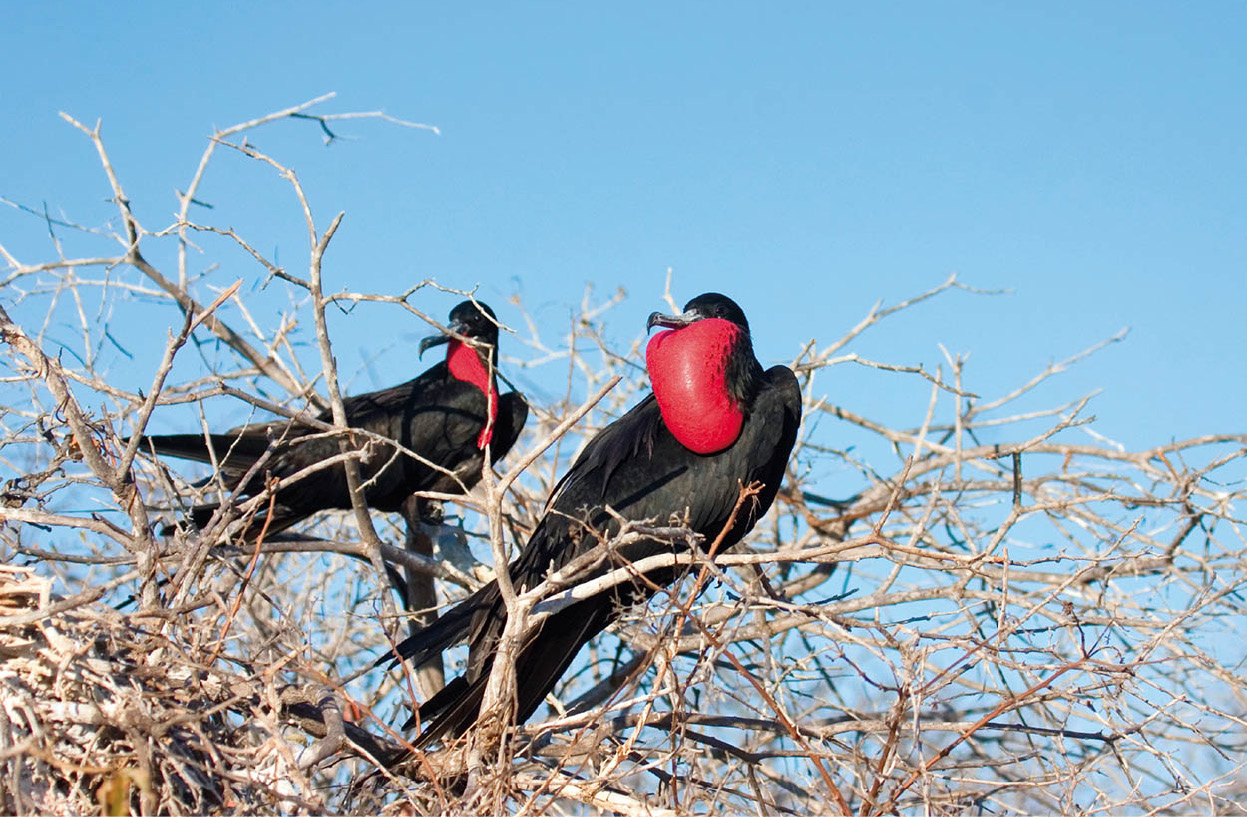Where else in the world will birds practically come out to greet you? Life without predators has made the birds of the Galápagos fearless, which means that many of them are easy to spot. There are 58 resident species, of which 28 are endemic, as well as about 30 migratory birds. The seabirds are the most frequently seen: in the dry coastal areas you are likely to spot three species of the booby family, the waved albatross – found nowhere in the world except on the Galápagos island of Española, which supports a nesting colony of 12,000 pairs – and the world’s only flightless seabirds, the Galápagos penguin and the flightless cormorant. The best time for bird-watching is in winter (October to February) when most migrants are visiting, and birds are reproducing. Then, a serious ornithologist might see 50 species in a week, and even a dilettante should be able to spot two dozen.
There are dangers in paradise, however: the introduction of mainland animals brought over by economic migrants to the islands has been disastrous. Cats and rats prey on the birds, while goats destroy the birds’ habitats. Farming on the inhabited islands also destroys habitats (agriculture supports 20 percent of the locals), and a natural phenomenon, the El Niño current, brings mosquito-carried disease and disrupts the food chain.

The magnificent frigate bird (Fregata magnificens magnificens) and its close relation the great frigate bird, can be seen near the coasts of many islands. The male is remarkable for the red gular pouch which puffs in the mating season.
iStockphoto
The Secret of Darwin’s Finches